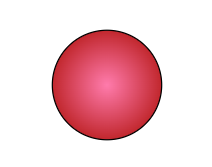1. What is the Terminal Velocity Calculator?
Definition: This calculator computes the terminal velocity of an object falling through a fluid (e.g., air) when the drag force equals the gravitational force.
Purpose: It helps students, physicists, and engineers analyze the maximum speed of falling objects for applications like skydiving, aerodynamics, and material science.
2. How Does the Calculator Work?
The calculator uses the formula for terminal velocity:
\( V_t = \sqrt{\frac{2mg}{\rho C_d A}} \)
Where:
- \( V_t \): Terminal velocity (m/s)
- \( m \): Mass of the object (kg)
- \( g \): Gravitational acceleration (m/s²)
- \( \rho \): Density of the fluid (kg/m³)
- \( C_d \): Drag coefficient (dimensionless)
- \( A \): Cross-sectional area (m²)
Steps:
- Select a shape to auto-fill the drag coefficient, or choose Custom to enter your own.
- Enter mass, cross-sectional area, fluid density, and gravitational acceleration with their units.
- Convert inputs to SI units (kg, m², kg/m³, m/s²).
- Calculate terminal velocity using the formula.
- Convert the result to the selected output unit (m/s, km/h, mph, ft/s).
- Display the result, formatted in scientific notation if the absolute value is less than 0.001 or greater than 10000, otherwise with 4 decimal places.
3. Importance of Terminal Velocity Calculation
Calculating terminal velocity is essential for:
- Physics: Understanding fluid dynamics and motion.
- Aerodynamics: Designing vehicles and parachutes.
- Safety: Analyzing falling objects in sports like skydiving.
- Education: Teaching concepts of force balance and motion.
4. Using the Calculator
Example 1 (Sphere, Metric Units): Calculate the terminal velocity of a sphere:
- Shape: Sphere (\( C_d = 0.47 \))
- Mass: \( m = 0.1 \, \text{kg} \)
- Cross-sectional Area: \( A = 0.01 \, \text{m}^2 \)
- Fluid Density: \( \rho = 1.204 \, \text{kg/m}^3 \)
- Gravity: \( g = 9.81 \, \text{m/s}^2 \)
- Output Unit: Meters per Second
- Calculation: \( V_t = \sqrt{\frac{2 \times 0.1 \times 9.81}{1.204 \times 0.47 \times 0.01}} \approx 25.5287 \, \text{m/s} \)
- Result: \( V_t = 25.5287 \, \text{m/s} \)
Example 2 (Custom Shape, Imperial Units): Calculate the terminal velocity of a custom object:
- Shape: Custom (\( C_d = 0.5 \))
- Mass: \( m = 2 \, \text{lb} \approx 0.9072 \, \text{kg} \)
- Cross-sectional Area: \( A = 1 \, \text{ft}^2 \approx 0.0929 \, \text{m}^2 \)
- Fluid Density: \( \rho = 1.204 \, \text{kg/m}^3 \)
- Gravity: \( g = 9.81 \, \text{m/s}^2 \)
- Output Unit: Miles per Hour
- Calculation: \( V_t = \sqrt{\frac{2 \times 0.9072 \times 9.81}{1.204 \times 0.5 \times 0.0929}} \approx 56.6178 \, \text{m/s} \approx 126.5636 \, \text{mph} \)
- Result: \( V_t = 126.5636 \, \text{mph} \)
5. Frequently Asked Questions (FAQ)
Q: Can I use different units for mass and area?
A: Yes, the calculator converts all inputs to SI units (kg, m²) internally and then converts the result to your selected velocity unit.
Q: What if my shape is not listed?
A: Select Custom and enter the appropriate drag coefficient for your object.
Q: Why is the result zero or invalid?
A: Ensure all inputs are positive numbers. Zero or negative values will cause errors, as they are physically invalid.
Terminal Velocity Calculator© - All Rights Reserved 2025
 Home
Home
 Back
Back
